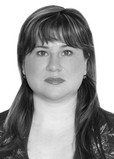Effects of Additional Recreational Physical Education Lessons on Adaptive Capabilities of Female Students Diagnosed with Inflammatory Joint Diseases
Фотографии:
ˑ:
PhD, Associate Professor E.A. Milashechkina1
Dr. Biol., Professor T.I. Jandarova2
O.V. Pogorelova1
1Peoples' Friendship University of Russia, Moscow
2North Caucasus Federal University, Stavropol
Objective of the study was to analyze adaptive capabilities of the body of female students attributed to a special health group diagnosed with inflammatory joint diseases, as well as the results of their correction by means of recreational physical education practices.
Methods and structure of the study. The study was carried out at the premises of North-Caucasus Federal University and involved the first-year female students aged 18-19 years. The functionality of the leading body adaptive systems was assessed based on the following indicators: body mass index, adaptive potential of the circulatory system, physical fitness rates. The female students’ psychoemotional state was evaluated using the WAM (wellbeing, activity, mood) questionnaire.
Results of the study. With the introduction of additional (extracurricular) recreational physical education classes, the number of female students with the 1st degree of obesity decreased; the physical fitness rates and exponential of adaptation potential of blood circulation improved. The activity and mood rates increased significantly (p<0.05-0.01) after the training session. The additional recreational physical education classes were found to have a positive effect on the adaptive capabilities and psychoemotional state of the SHG female students diagnosed with inflammatory joint diseases.
Conclusion. The study proved the necessity of introduction of additional recreational physical education lessons in the work-rest schedule of female students with musculoskeletal disorders.
Keywords: special health group, inflammatory joint diseases, physical development, rehabilitation, adaptation, psychoemotional state.
References
- Bayevskiy R.M., Berseneva A.I., Paleev N.R. Otsenka adaptatsionnogo potentsiala sistemyi krovoobrascheniya pri massovyih profilakticheskih obsledovaniyah Assessment of adaptive potential of circulatory system during mass preventive examinations. M.: Ekspressinformatsiya VNIIMI publ., 1987. 19 p.
- Balabanova R.M., Erdes Sh.F. Rasprostranennost revmaticheskih zabolevaniy v Rossii v 2012–2013 gg. [Prevalence of rheumatic diseases in Russia in 2012–2013]. Nauchnoprakticheskaya revmatologiya. 2015.v. 53, no. 2. pp. 120–124.
- Gubareva L.I. Ekologicheskiy stress [Environmental stress]. St. Petersburg: Lan, Stavropolservisshkola publ., 2001. 448 p.
- Milashechkina E.A., Jandarova T.I. Otsenka urovnya fizicheskogo razvitiya i funktsii dyihaniya studentok spetsialnoy meditsinskoy gruppyi s raznyim ob'emom dvigatelnoy aktivnosti [Physical progress rates of special health group students diagnosed with cardiovascular system disorders vesrus their physical activity rates]. Teoriya i praktika fiz. kultury. 2018. no.4. pp. 17–19.
- Ilnitskiy A.N. et. al., Ilnitsky A.N. [ed.] Osnovyi fizicheskoy reabilitatsi : uchebnometod. kompleks dlya studentov [Fundamentals of Physical Rehabilitation]. Teaching aid. Novopolotsk: PSU publ., 2009.296 p.
- Romanchenko S.A. Otsenka urovnya fizicheskogo razvitiya i funktsii dyihaniya studentok spetsialnoy meditsinskoy gruppyi s raznyim ob'emom dvigatelnoy aktivnosti [Correction of student health status in physical education process]. PhD diss. St. Petersburg, 2006. 19 p.
- Sivakova N.N. Ispolzovanie adaptatsionnogo potentsiala sistemyi krovoobrascheniya v otsenke adaptatsii uchaschihsya k usloviyam povsednevnoy deyatelnosti [Use of adaptive potential of circulatory system in assessing adaptation of students to conditions of everyday activity]. Contemporary Problems of Physical Culture and Olympic Movement: Proc. regional res.practical conf. Rn/D.: RITs publ., 1994. v. II. pp. 19–23.
- Fileshi P.A., Sivakova N.N., Trufanova T.E. Opredelenie biologicheskogo vozrasta shkolnika po urovnyu zdorovya [Health level based estimation of biological age of schoolchild]. Agerelated features of physiological systems of children and adolescents: Proc. IV AllUnion Conf. «Physiology of human development». M., 1990. p. 294.
- Khasnutdinova S.L., Gernet I.N., Vodyannikov Yu.S. Sovershenstvovanie zanyatiy fizicheskoy kulturyi u studentov s otkloneniyami v sostoyanii zdorovya [Actions to improve physical education classes for students with health problems]. Proc. XIV Interregional educational method. scientific. conf. «Innovative methods and technologies of training and education in application to medical university». Arkhangelsk, 23 Apr 2009, pp. 94–96.
- Cherkashina I.V. Personalizirovannaya reabilitatsiya bolnyih s zabolevaniyami sustavov [Personalized rehabilitation of patients with joint diseases]. doct. diss. (Med.). 2017.342 p.



 Журнал "THEORY AND PRACTICE
Журнал "THEORY AND PRACTICE